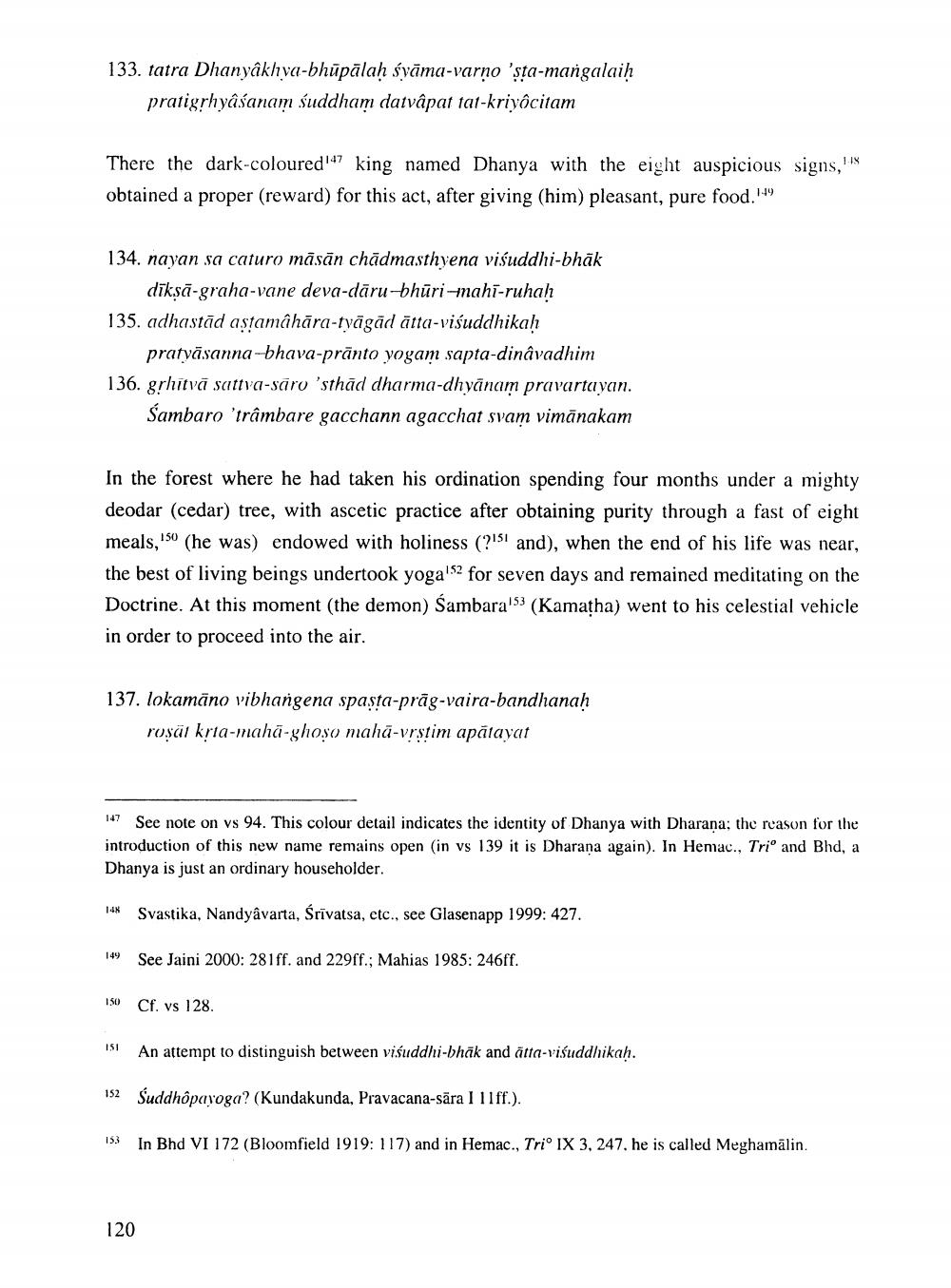________________
133. tatra Dhanyâklıva-bhūpālah sväma-varno 'sta-mangalaih
pratigrhyâsanam śuddham datvâpat tat-kriyộcitam
There the dark-coloured 47 king named Dhanya with the eight auspicious signs, obtained a proper (reward) for this act, after giving (him) pleasant, pure food."
134. nayan sa caturo māsān chădmasthyena visuddhi-bhāk
dīksā-graha-vane deva-dāru-bhūri-nahi-ruhah 135. adhastād astamâhāra-tyāgādātta-visuddhikah
pratvāsanna-bhava-prānto yogam sapta-dinâvadhim 136. grhitvä sattva-säro 'sthād dharma-dhyānam pravartayan.
Sambaro 'trâmbare gacchann agacchat svam vimänakam
In the forest where he had taken his ordination spending four months under a mighty deodar (cedar) tree, with ascetic practice after obtaining purity through a fast of eight meals, '50 (he was) endowed with holiness (?151 and), when the end of his life was near, the best of living beings undertook yogals2 for seven days and remained meditating on the Doctrine. At this moment (the demon) Sambara 53 (Kamatha) went to his celestial vehicle in order to proceed into the air.
137. lokamāno vibhangena spasta-prāg-vaira-bandhanah
rosẽ kria-tuaha-ghos(naha-vrstim apătayat
147 See note on vs 94. This colour detail indicates the identity of Dhanya with Dharana: the reason for the introduction of this new name remains open (in vs 139 it is Dharana again). In Hemac., Trio and Bhd, a Dhanya is just an ordinary householder.
14* Svastika, Nandyavarta, Śrīvatsa, etc., see Glasenapp 1999: 427.
149 See Jaini 2000: 281ff. and 229ff.; Mahias 1985: 246ff.
150
Cf. vs 128.
1ST
An attempt to distinguish between visuddhi-bhāk and ätta-visuddhikah.
152 Suddhôpavoga? (Kundakunda, Pravacana sāra I 11ff.).
153
In Bhd VI 172 (Bloomfield 1919: 117) and in Hemac., Trio IX 3, 247, he is called Meghamalin.
120




